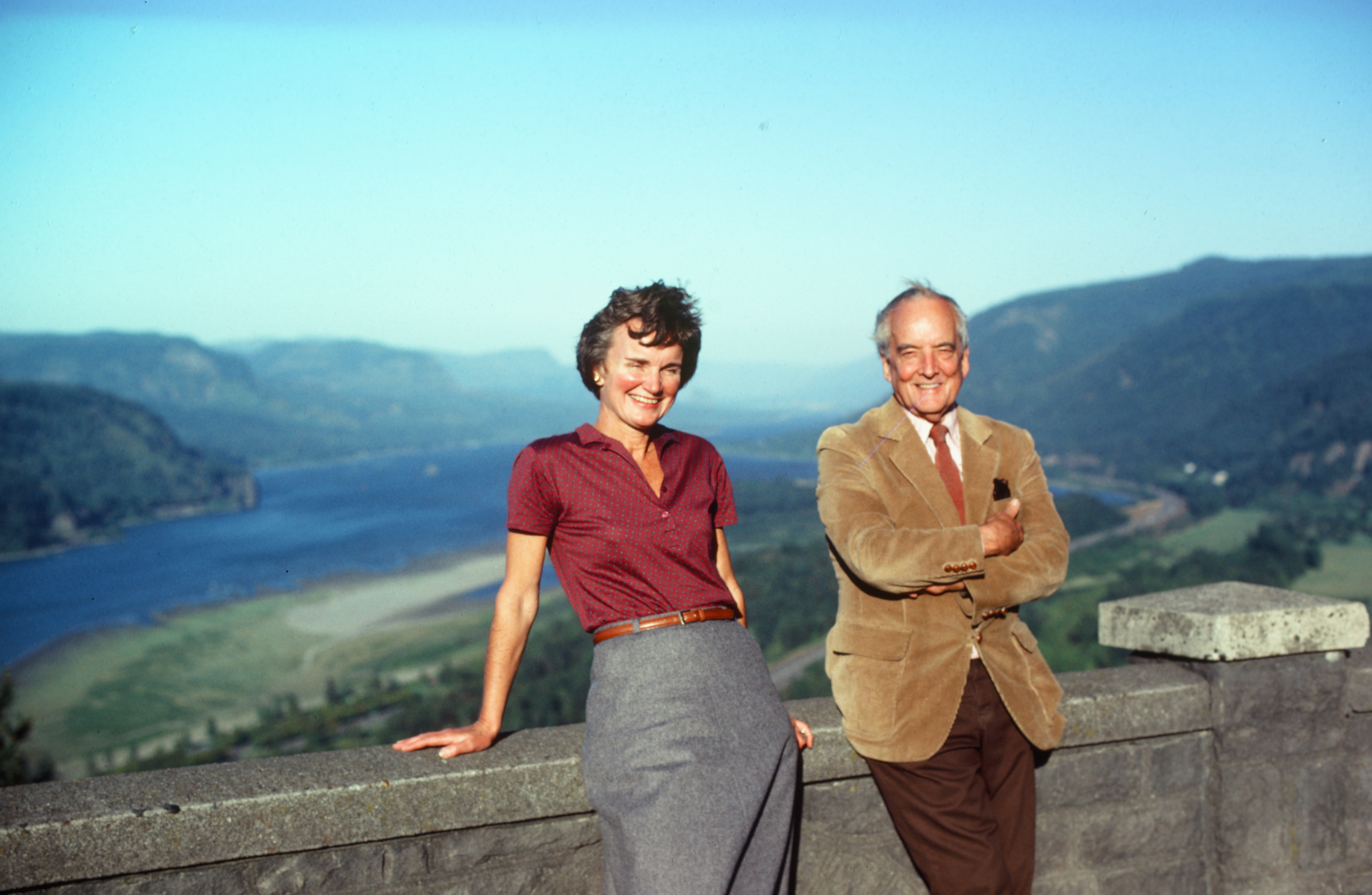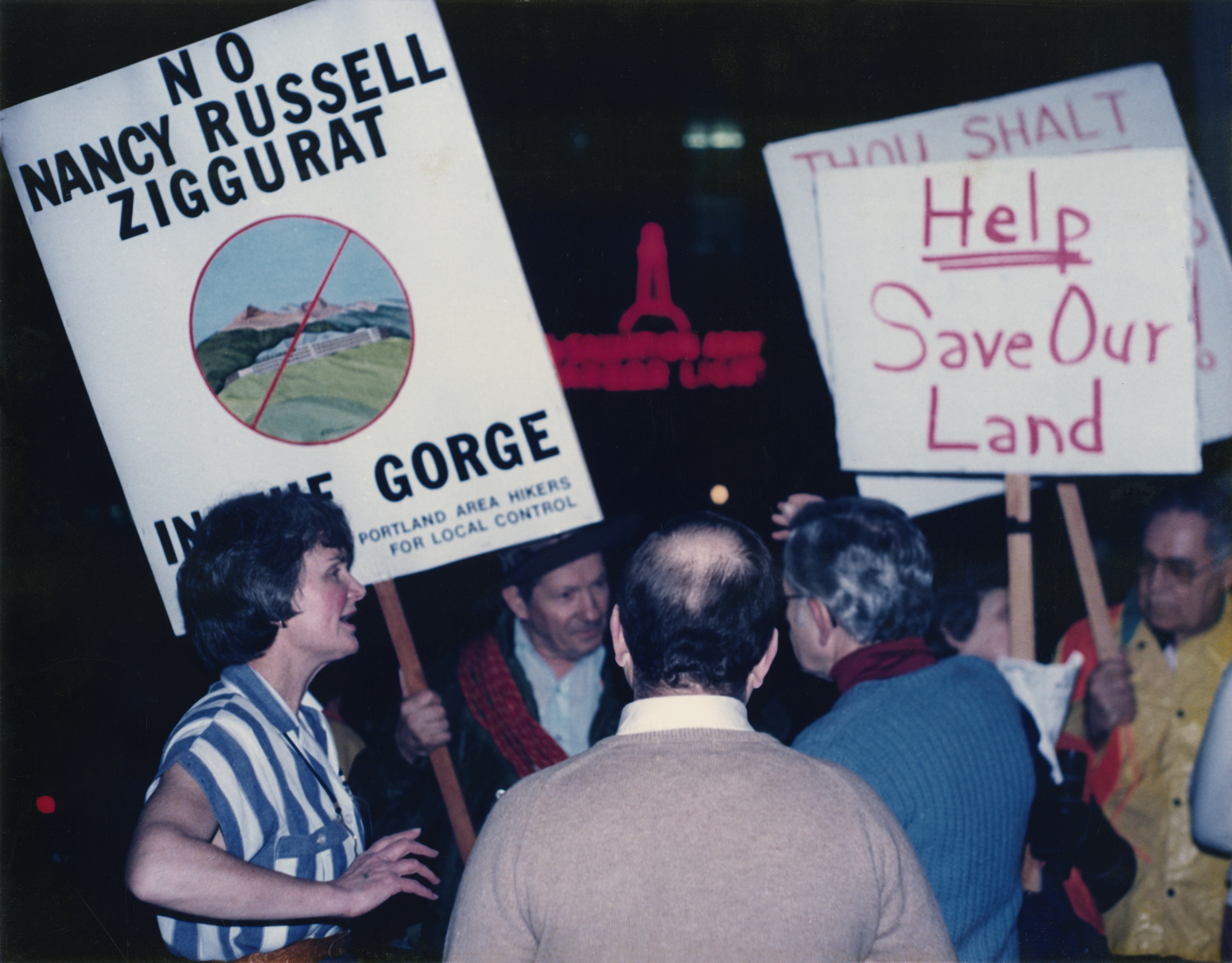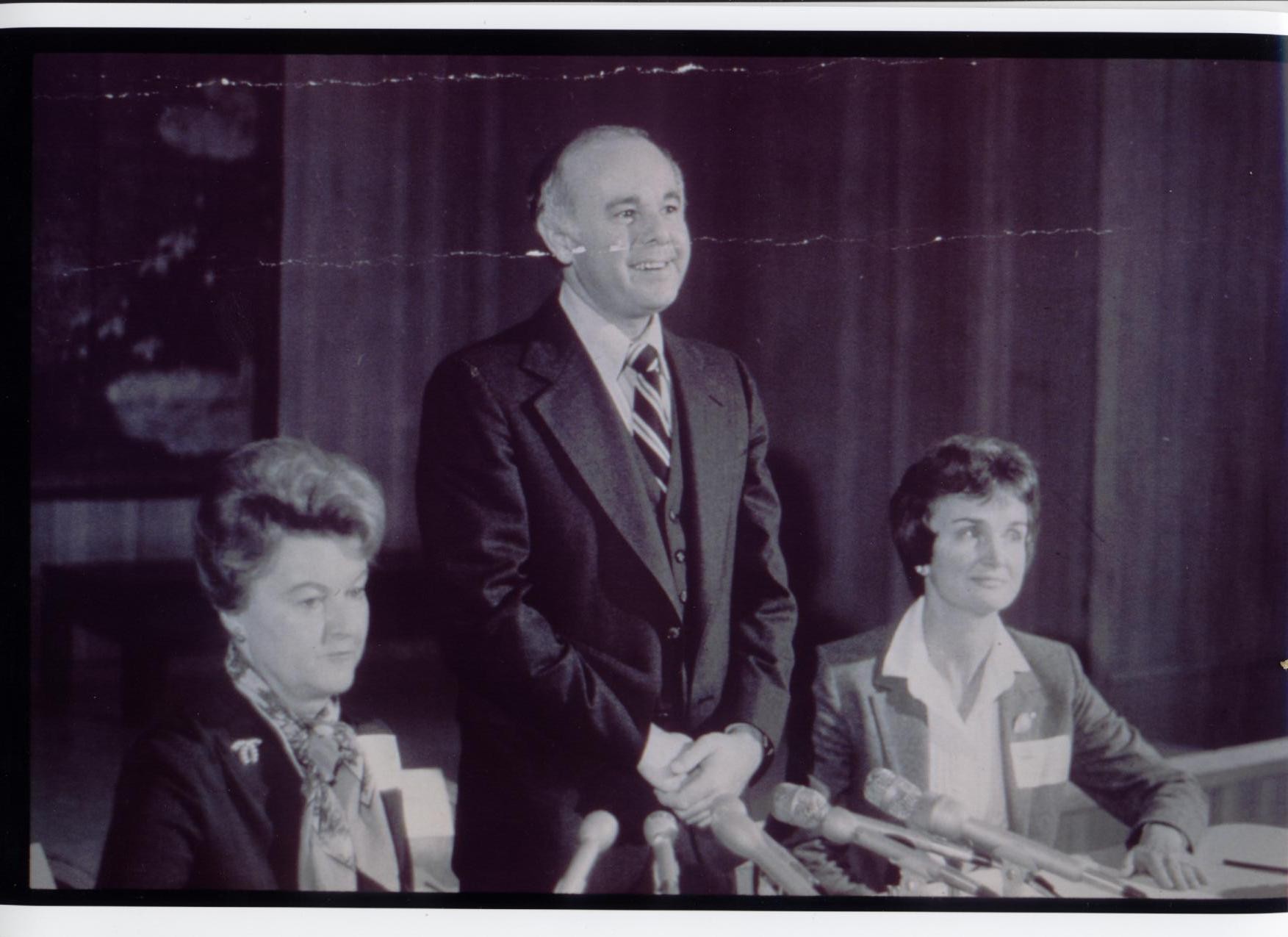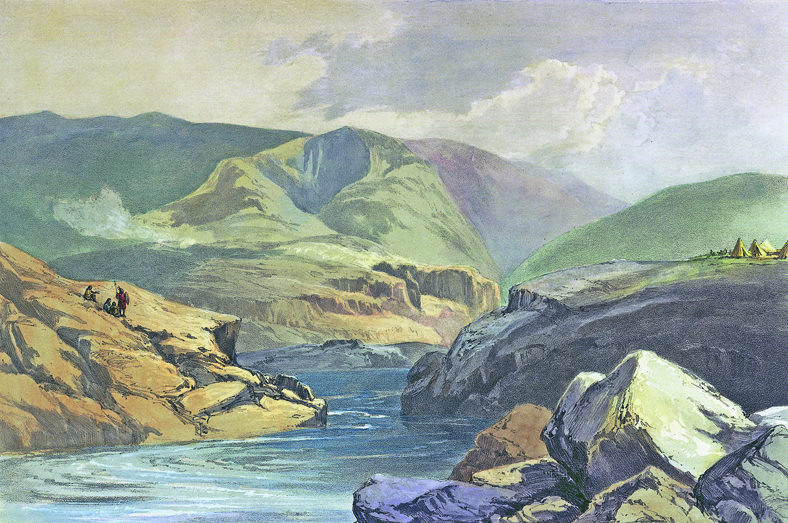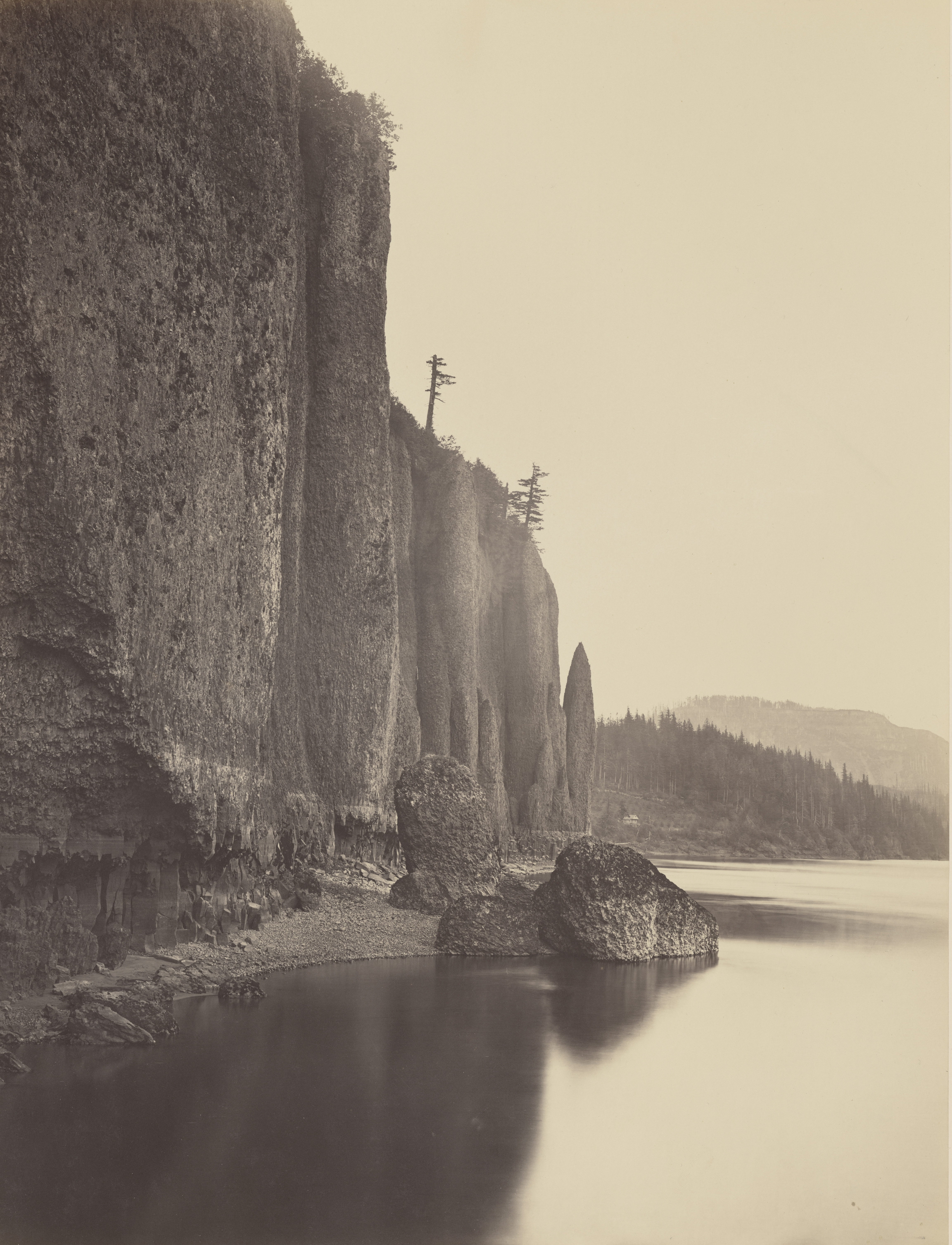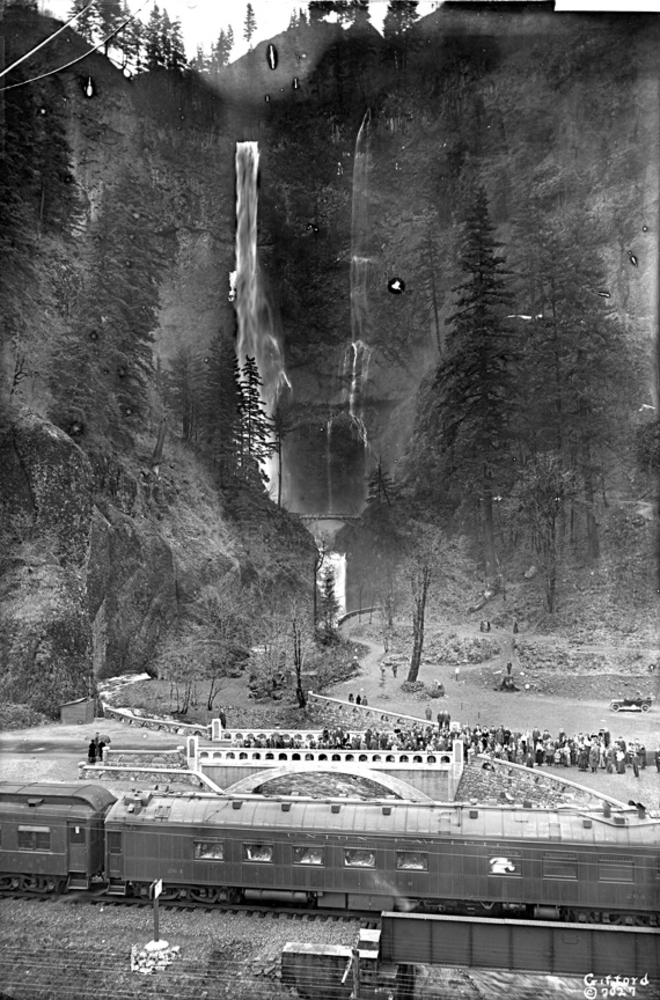Nancy Neighbor Russell was instrumental in rescuing one of the Northwest’s most revered and threatened landscapes, the Columbia River Gorge in Oregon and Washington. In 1980, she founded Friends of the Columbia Gorge which worked to protect the Gorge from development and secure it for federal protection. Russell was an untiring advocate for the Columbia River Gorge National Scenic Area Act, which the U.S. Congress passed in 1986.
Nancy Neighbor was born in Portland on January 11, 1932, to Robert W. Neighbor, an insurance salesman, and Mary Ann Bishop Neighbor. In 1935, the Neighbors moved to a family farm in Dundee to save on rent and food expenses. Her love of nature began with her experiences at the farm and on trips to Elk Lake in central Oregon’s Cascade mountains. The family moved back to Portland in 1936. Nancy won a scholarship to attend Catlin-Hillside School (now Catlin Gabel School), where she excelled in academics and athletics and graduated in 1949. She graduated from Scripps College in Claremont, California, in 1953.
Neighbor married Bruce H. Russell, a stockbroker, in 1957. They had three daughters and two sons, one of whom died from a fever when he was two years old. Nancy Russell played tennis competitively and, beginning in 1973, joined the Berry Botanical Garden, the Native Plant Society of Oregon, and the Portland Garden Club.
In 1979, architect John Yeon, who had opposed the industrialization of the Gorge since the 1930s, recruited Russell to fight what he saw as an existential threat: development promoted by an interstate bridge (I-205) over the Columbia River that would link unzoned Skamania County, Washington, to downtown Portland. Previous efforts to protect the Gorge—as a national park in 1916, an interstate park in the 1930s, and a national recreation area in 1970—had been foiled by the U.S. Forest Service, Gorge residents, and development interests. Although Russell had no experience in politics or activism, she agreed to help Yeon.
With assistance from Multnomah County Executive Don Clark and the Portland Garden Club, Russell formed Friends of the Columbia Gorge in 1980 to lobby Congress to create the nation’s first National Scenic Area. When Skamania County approved several high-profile subdivisions, she recruited plaintiffs and pro bono attorneys, raised money for court costs, and filed lawsuits, all while strengthening the Friends, opening Vancouver and Seattle offices, forming national coalitions, and pushing Congress. The lawsuits temporarily stymied developments in Skamania County, and Russell encouraged San Francisco-based Trust for Public Land to buy Gorge lands, including the subdivisions and industrial sites at the Gorge entrances. Russell was vilified for her efforts. “Save the Gorge from Nancy Russell” bumper stickers proliferated, her tires were slashed, and her life was threatened.
Six years later, in 1986—despite heated opposition from rural Gorge counties, property rights organizations, House Republicans, and the Reagan Administration—the U.S. House of Representatives approved the Columbia River Gorge National Scenic Area Act after a four-hour floor debate. Senate approval quickly followed on the last full day of the congressional session. Thirty days later, after a last-second reversal, President Reagan signed the bill just hours before its expiration, deferring to Oregon Senator Mark Hatfield and ignoring veto recommendations from three cabinet secretaries. Hatfield was integral in advocating for the National Scenic Area and used his seniority and position as chair of the Appropriations Committee to persuade his colleagues to approve the legislation and appropriate funds to buy Gorge lands.
Russell continued to work with Friends of the Columbia Gorge and others to protect the Gorge. She masterminded the creation of a six-mile-long linear park on the original Columbia River Highway at the Mosier Twin Tunnels, and she and her husband purchased over thirty properties in the Gorge, most of which they bequeathed to Friends of the Columbia Gorge Land Trust, which she created. Under her leadership, the Trust for Public Land protected ninety properties in the Gorge—almost 22,000 acres.
Nancy Neighbor Russell died in Portland on September 19, 2008, from amyotrophic lateral sclerosis. A stone wall monument at Cape Horn on the Washington side of the Columbia River, dedicated in 2011, memorializes her work.
-
![]()
Nancy Russell and John Yeon at Crown Point, summer 1980.
Courtesy Russell Archives
-
![]()
Russell debating Skamania County protestors picketing the Friends' first winter picnic fundraiser, Portland, 1982.
Courtesy Friends of the Columbia Gorge archives -
![Don Clark with PGC president Maggie Drake (left) and Nancy Russell.]()
Portland Garden Club press conference, Nov. 18, 1980.
Don Clark with PGC president Maggie Drake (left) and Nancy Russell. Courtesy Friends of the Columbia Gorge archives -
![]()
A popular bumper sticker.
Courtesy Friends of the Columbia Gorge archives
Related Entries
-
![Columbia River]()
Columbia River
The River For more than ten millennia, the Columbia River has been the…
-
![Columbia River Gorge]()
Columbia River Gorge
The Columbia River Gorge is a striking natural landscape of mountains, …
-
![Columbia River Gorge National Scenic Area]()
Columbia River Gorge National Scenic Area
Established by Congress in 1986, the Columbia River Gorge National Scen…
-
Columbia River Highway
The Columbia River Highway, now known as the Historic Columbia River Hi…
-
![John Yeon (1910–1994)]()
John Yeon (1910–1994)
Few architects have influenced the State of Oregon as broadly as John Y…
-
![Mark O. Hatfield (1922-2011)]()
Mark O. Hatfield (1922-2011)
As an Oregon legislator, secretary of state, governor, and United State…
Related Historical Records
Map This on the Oregon History WayFinder
The Oregon History Wayfinder is an interactive map that identifies significant places, people, and events in Oregon history.
Further Reading
Blair, Bowen. A Force for Nature: Nancy Russell’s Fight to Save the Columbia Gorge. Corvallis: Oregon State University Press, 2022.
Durbin, Kathie. The Columbia River Gorge: Bridging a Great Divide. Corvallis: Oregon State University Press, 2013.
Abbott, Carl, Sy Adler, and Margery Post Abbott. Planning a New West: The Columbia River Gorge National Scenic Area. Corvallis: Oregon State University Press, 1997.

